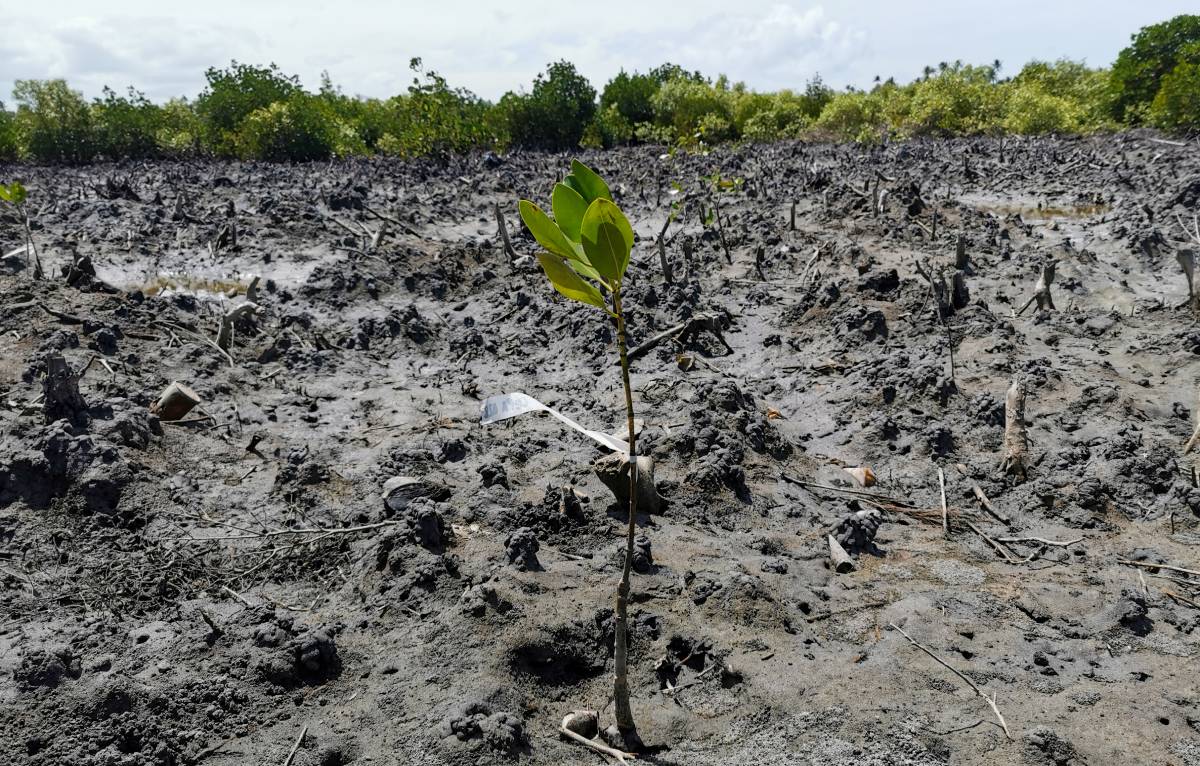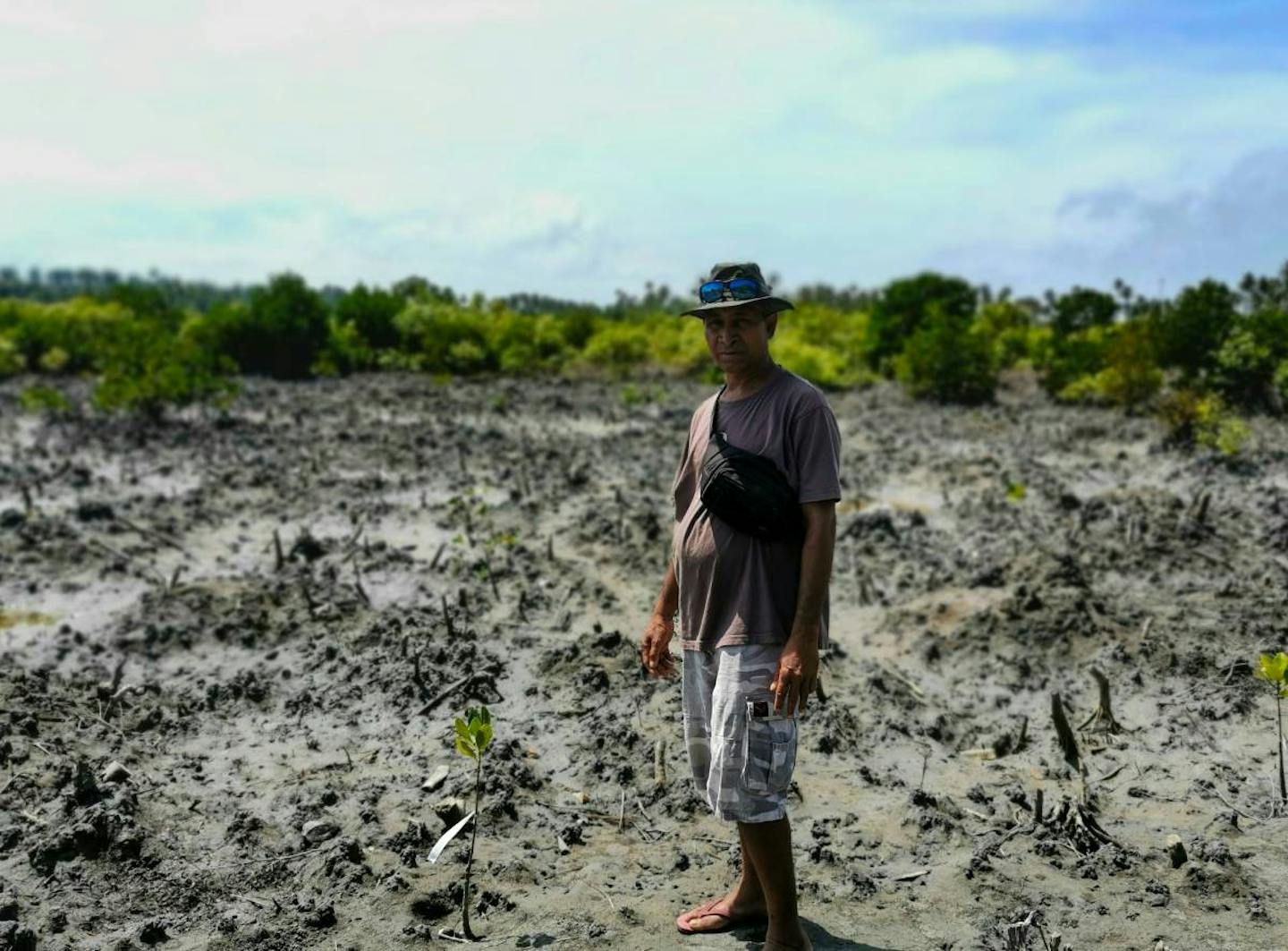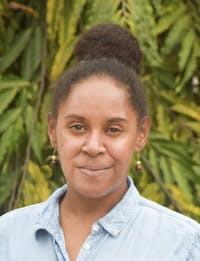Reforested mangroves can save an Indigenous community from disappearing
- Nature Conservation
- Wetland Restoration
- Ecosystem Restoration
- Blue Carbon
- Mangrove Restoration
- Australasia Realm
Kala Carlos Alu has spent the last 10 years convincing his people to not cut down mangroves in Alewai village of Rigo District, Central Province, Papua New Guinea (PNG). He has focused on looking for a more sustainable way to protect the local shoreline since he was elected the Ward Councilor of Alewai in 2012.
Initially, Alu was only spreading announcements and awareness about the importance of mangroves. Then, he set up a village committee with one of the tasks covering environmental issues, such as mangrove protection, receding shorelines, and keeping the environment clean from waste. Alu assigned a member to do this task, but they had other obligations. So, he took the responsibility upon himself. Now, Alu is seeing results with PNG’s government coming on board to help him replant a heavily deforested mangrove area.
A decade ago, Alu says that his community had mangroves protecting their shoreline. Today, their coast is thinning and the village’s land is getting smaller. As Ward Councilor, he has been knocking on doors pleading villagers to not to cut down the trees in mangrove forests. It is a challenge though as mangroves are the population’s only source of firewood.

A mangrove planted by volunteers on World Environment Day. Image credit: Courtesy of Lilian Kenequa
Mangroves play a crucial role in Papua New Guinea’s coastal communities. The trees provide homes for a variety of biodiversity which are the main food supply and source of income in the Rigo District. Based on an analysis conducted by PNG’s Climate Change and Development Authority (CCDA), mangroves protect coastlines against storms and erosion as well as absorb and store carbon dioxide.
Climate change has brought complications to the island of Papua New Guinea. Rising sea levels have affected water wells, eroded away shorelines, and prompted more floods during the monsoon season. With a growing population of over 200 residents in 2021, Alewai village is facing their greatest survival challenge to date. A problem mangroves could fix.
When Papua New Guinea’s Conservation, Environment, and Protection Authority (CEPA) proposed to have one of their replanting programs in Alewai during World Environment Day, Alu was relieved. CEPA works alongside small communities to help them restore their native ecosystems. However, he is not confident that all the mangroves will survive, as the ones recently planted are not native to this region.
As a result, Alu requested that a nursery be set up in Alewai so that native mangroves can be groomed and grown on their home soil. “If they could build a mangrove nursery in the village, especially with native species trees, planting mangrove will become a normal activity for the villagers,” he said.
This is a turning point as CEPA had been searching for suitable locations along the country’s east coast to help villages create a suitable place to establish a mangrove nursery. Maino Virobo, CEPA’s director of policy, said that Alewai meets all the requirements to host such a nursery. While Alu waits for further action from CEPA, he continues his work to raise awareness and protect mangroves. “We need everyone on board to save our village. Because, if we do not act, we will have to move inland,” he sighed.


